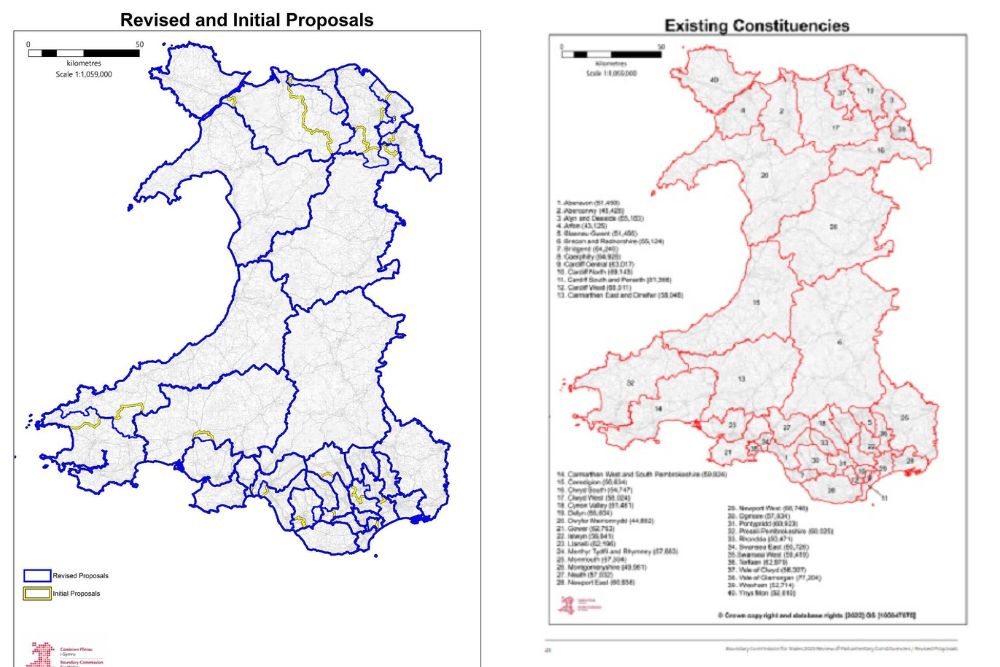Boundary Commission for Wales submits final recommendations following review

The Boundary Commission for Wales has submitted its final recommendations report of the review of parliamentary constituencies to the Speaker of the House of Commons.
The review comes after Westminster voted to cut the number of Wales’ MPs down from 40 to 32.
The new constituencies could also be used at future Senedd elections.
Under rules set out in the Parliamentary Constituencies Act 1986 (as amended) each constituency proposed by the Boundary Commission for Wales must contain between 69,724 and 77,062 electors.
The only exception to this rule is Ynys Môn which is a protected constituency, and therefore sees no changes to its name, designation, or boundaries suggested in these proposals.
Notable changes to the newly revised constituencies include:
Newport West and Caerphilly and Islwyn have had their boundaries changed to create a Newport West and Islwyn constituency
Much of the previous Aberconwy constituency has been enlarged to include much of the previous Clwyd, leaving a coastal Clwyd North constituency
All of Bangor is now included in a new Bangor and Aberconwy constituency
The previously intended Delyn constituency extends downwards and becomes Clwwyd East, with Alyn and Deeside keeping its name but almost completely changing its boundaries
St David’s has been taken out of the new Ceredigion-Preseli constituency, and Maenclochog included
The Speaker will lay the report before Parliament in due course and the Commission will then publish the report on its website and portal.
Record responses
The Commission began the review in 2021 and was required to submit its final recommendations to the Speaker of the House of Commons by 1 July this year.
The final public consultation period concluded in November last year after receiving a record number of responses since the beginning of the review.
In all, the Commission received around 2,000 responses over the three consultation periods, significantly higher than the number received during the previous review in 2018.
All representations received by the Commission during the four-week consultation period will be published alongside the Final Recommendations.
Commenting on the report’s submission, Shereen Williams, Secretary to the Boundary Commission for Wales said: “The Commission looks forward to the laying of the Final Recommendations report, which is strongly influenced by the thousands of representations received from the public and our stakeholders.
“We would like to thank Wales’ Members of Parliament, Principal Councils, and Political Parties for the constructive way in which they have engaged with the process.
“Our greatest thanks however is reserved for the members of the public who asked questions, submitted their views, and helped shape Wales’ new parliamentary constituencies.”
The Commission’s Final Recommendations for 32 Welsh parliamentary constituencies will come into force at the next ordinary general election by the automaticity rule, meaning that no vote in parliament is required for the change to be enacted.
Support our Nation today
For the price of a cup of coffee a month you can help us create an independent, not-for-profit, national news service for the people of Wales, by the people of Wales.





The next step is to decide how to pair up these 32 new Westminister constituencies to form 16 Senedd swperetholaethau. The logical place is start is with Ynys Môn. The critical choice is whether to pair it with Bangor/Aberconwy or with Gweddill
Gwynedd. The choice made will have important ramifications for seats all over North and Mid Wales.